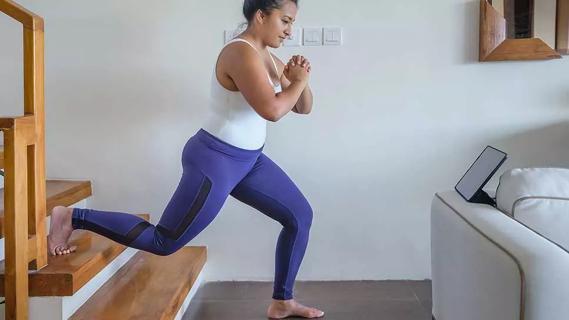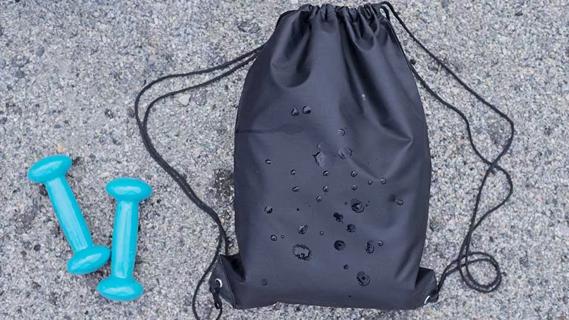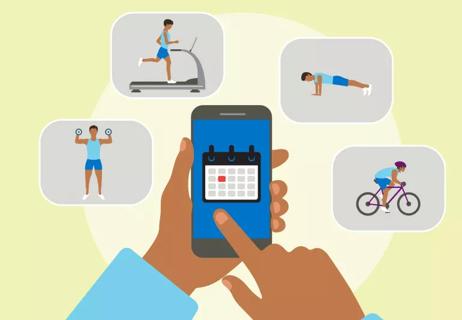Top tip: Take it slow as you get back into your routine

Remember when working out seemed as much a part of your schedule as eating breakfast, clocking in for work or brushing your teeth? A day just didn’t seem complete without some sort of fitness activity.
Advertisement
Cleveland Clinic is a non-profit academic medical center. Advertising on our site helps support our mission. We do not endorse non-Cleveland Clinic products or services. Policy
Then, the sweat-dripping sessions somehow stopped. Perhaps a new job, extra family responsibilities or a suddenly jam-packed calendar stole your workout time.
Whatever the reason, you went from very active to very inactive … and now you’re feeling bleh.
The good news? Getting back in a workout groove is definitely doable, says athletic trainer Jason Cruickshank, ATC, CSCS. All it takes is a little planning, some patience and a dash of desire.
So, let’s get to it.
Anyone who’s returning to working out should plan to take it slowly at the beginning, says Cruickshank. Don’t expect to start where you left off. (This is especially true if you were a higher-performing athlete.)
Trying to lift too much weight right away, for instance, can put undue stress on muscles and tendons that haven’t been used in a while. Ditto for immediately heading out on long runs or even forcing your body into a tough stretch.
“Think of the time and work it took to get to your previous fitness level,” says Cruickshank. “You’re not being fair to yourself if you think you’ll jump back in at the same spot.”
If you push too hard too fast, you risk getting sidelined with an injury — which isn’t a good start to a new exercise regimen. So, start at a lower intensity to determine your fitness level. Then, look to rebuild your endurance and retrain your muscles.
Advertisement
If you’ve worked out before, you know this truth: Putting your muscles to the test can leave you a little sore. A good sore, but sore.
Restarting a fitness routine may amplify that feeling a bit. Once-simple workouts may seem a bit more challenging than you remember at first. But that’s just part of the process. “Don’t get frustrated,” advises Cruickshank. “Be patient. The more you do it, the easier it will get.”
Another thing to watch out for? Wounded pride. As you dial back workouts during a fitness restart, try not to dwell on what you used to do. Instead, focus on making incremental improvements as you work back into your routine.
“Looking forward is more productive more than looking back,” notes Cruickshank.
Whatever your choice of workout may be — whether it’s lifting, running, cycling, swimming or some other activity — some basic advice applies when you’re restarting a routine.
For starters, get the all-clear from a physician, says Cruickshank.
“We always recommend checking with either your primary care physician or a physician who’s monitoring you, to make sure that your cardiovascular levels and blood panels are OK,” he adds. “Once you’re certified as healthy, you are safe to start into some training.”
Six other top tips include:
Advertisement
Now that you’ve restarted a workout routine, let’s talk about how to keep it going. “The most effective and long-lasting fitness programs are ones you enjoy that fit within your lifestyle,” says Cruickshank.
Build exercise into your life by:
And as long as we’re on the topic of fitness targets, the U.S. Centers for Disease Control and Prevention (CDC) offers some within its suggested mix of aerobic and strength training for optimal health.
Advertisement
The CDC recommends weekly goals of 150 minutes of moderate-intensity aerobic activity (such as brisk walking) or 75 minutes of vigorous-intensity aerobic workouts (such as running). Pair that with strength-training activities such as lifting, using resistance bands or even yard work.
Advertisement
Learn more about our editorial process.
Advertisement

The exercise — which you’ve probably been doing since grade school — can be intimidating, but proper form can help

Exercise lowers risk for heart conditions, improves mental health and reduces visceral fat that can compromise your organs

Ask questions, get referrals and consider if someone is a good fit for you and your fitness goals

Expect a few bumps in the road, work out for the right reasons and give yourself some credit

Jump into the swing of things to improve your coordination, burn calories and get your heart rate going

Walking with a weighted backpack is a low-impact, full-body workout that’s growing in popularity

A super high heart rate means you’re burning more than fat

Meet your workout goals by accounting for frequency, intensity, time and type

Type 2 diabetes isn’t inevitable with these dietary changes

Applying a hot or cold compress can help with pain